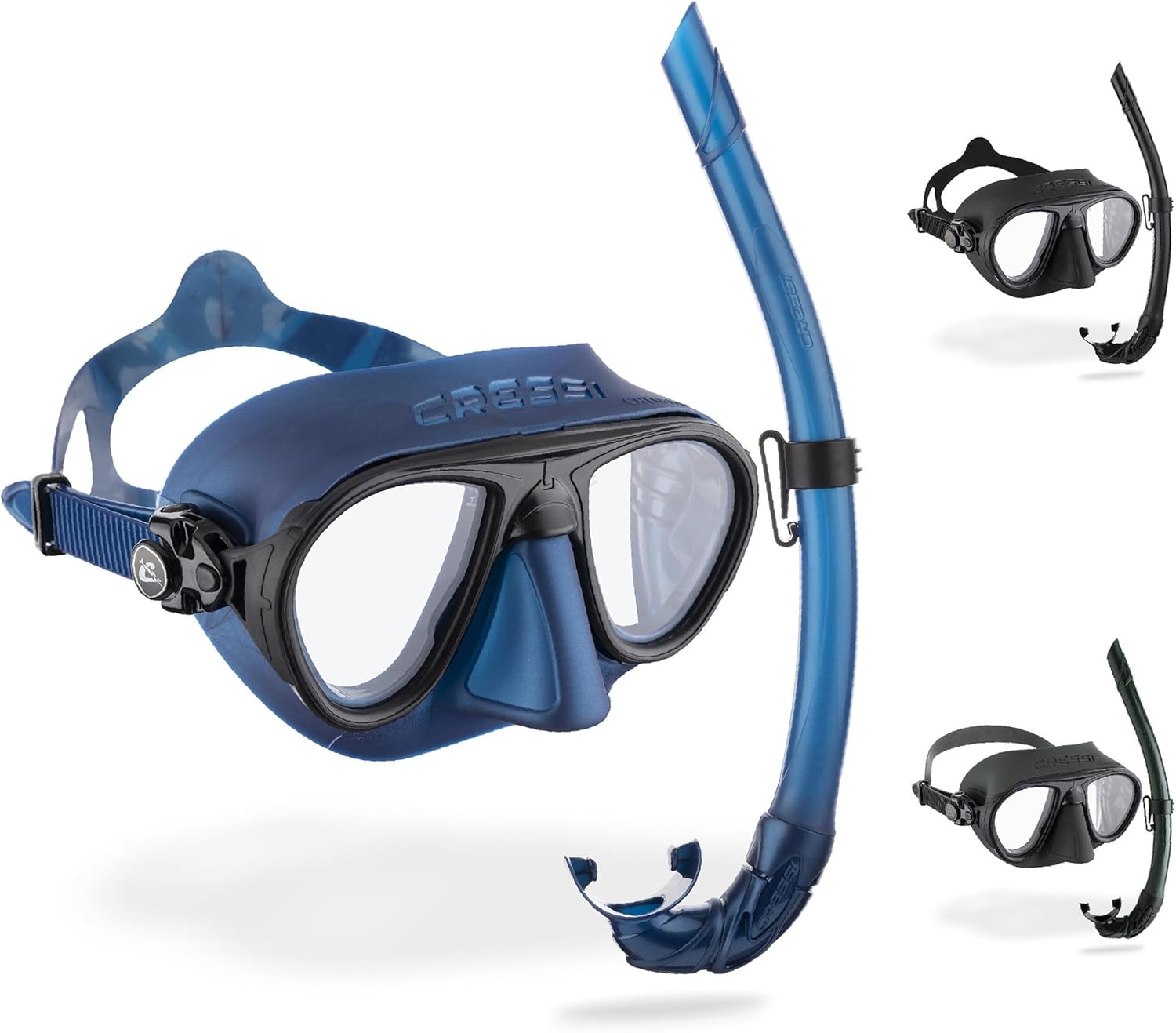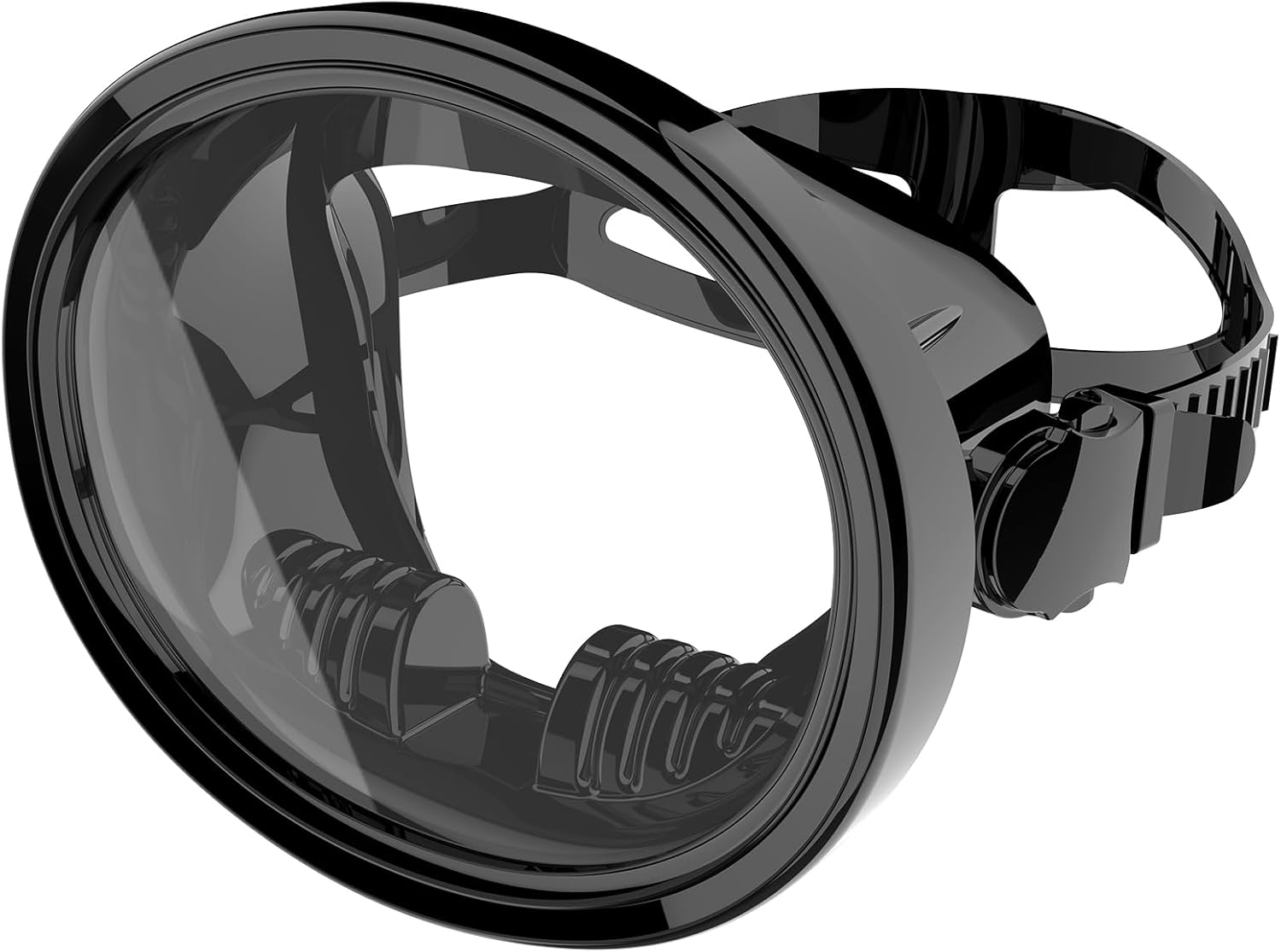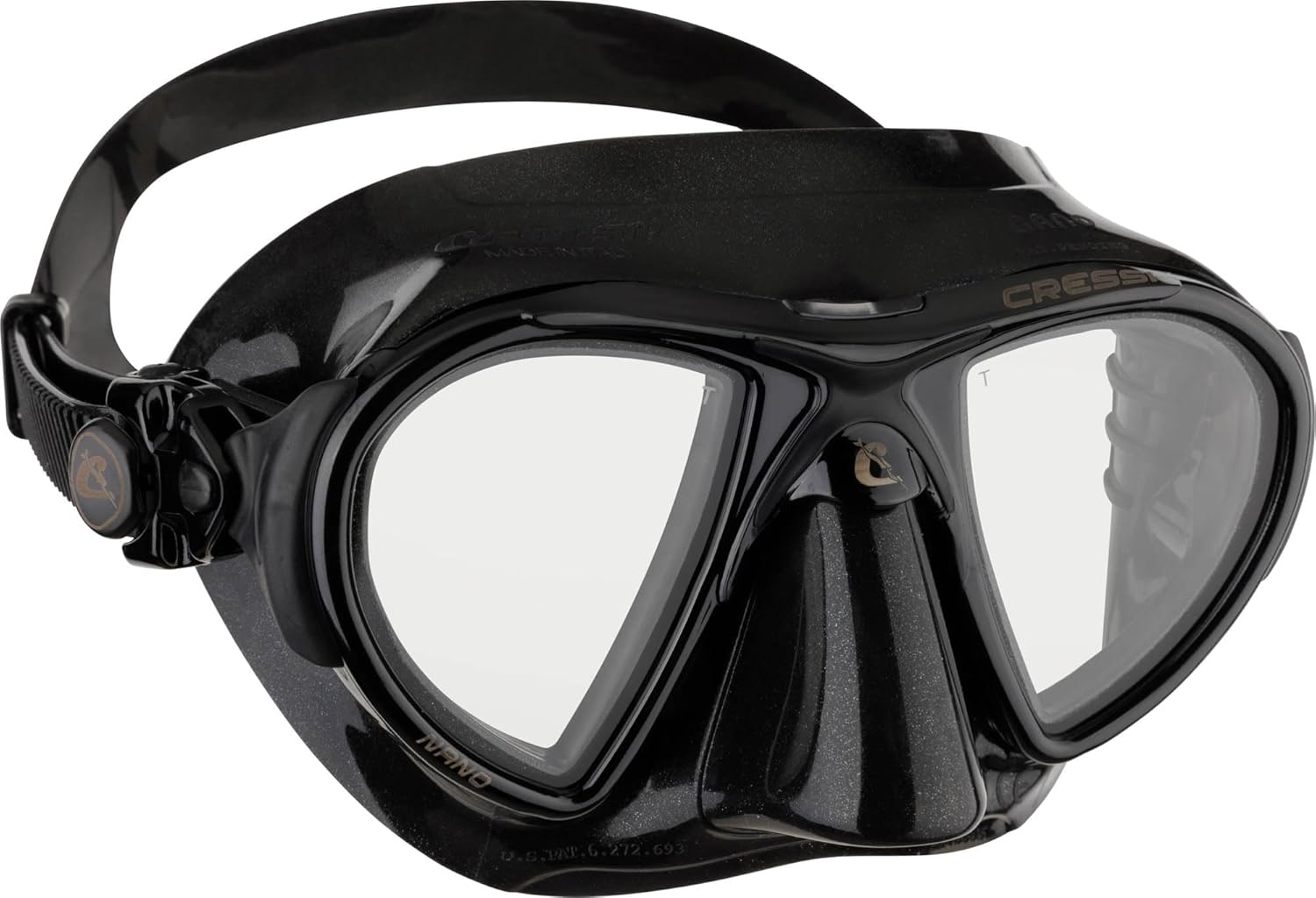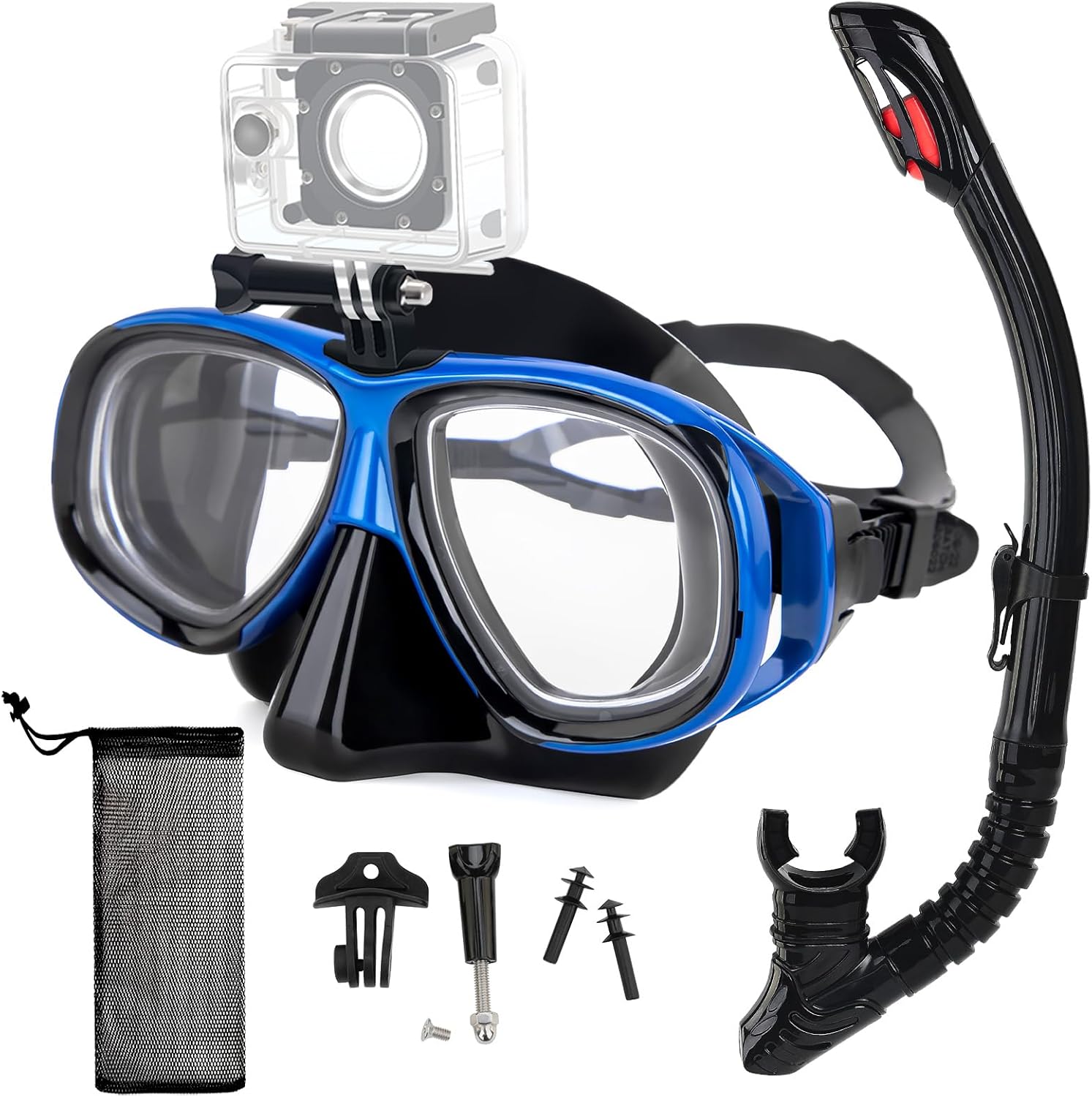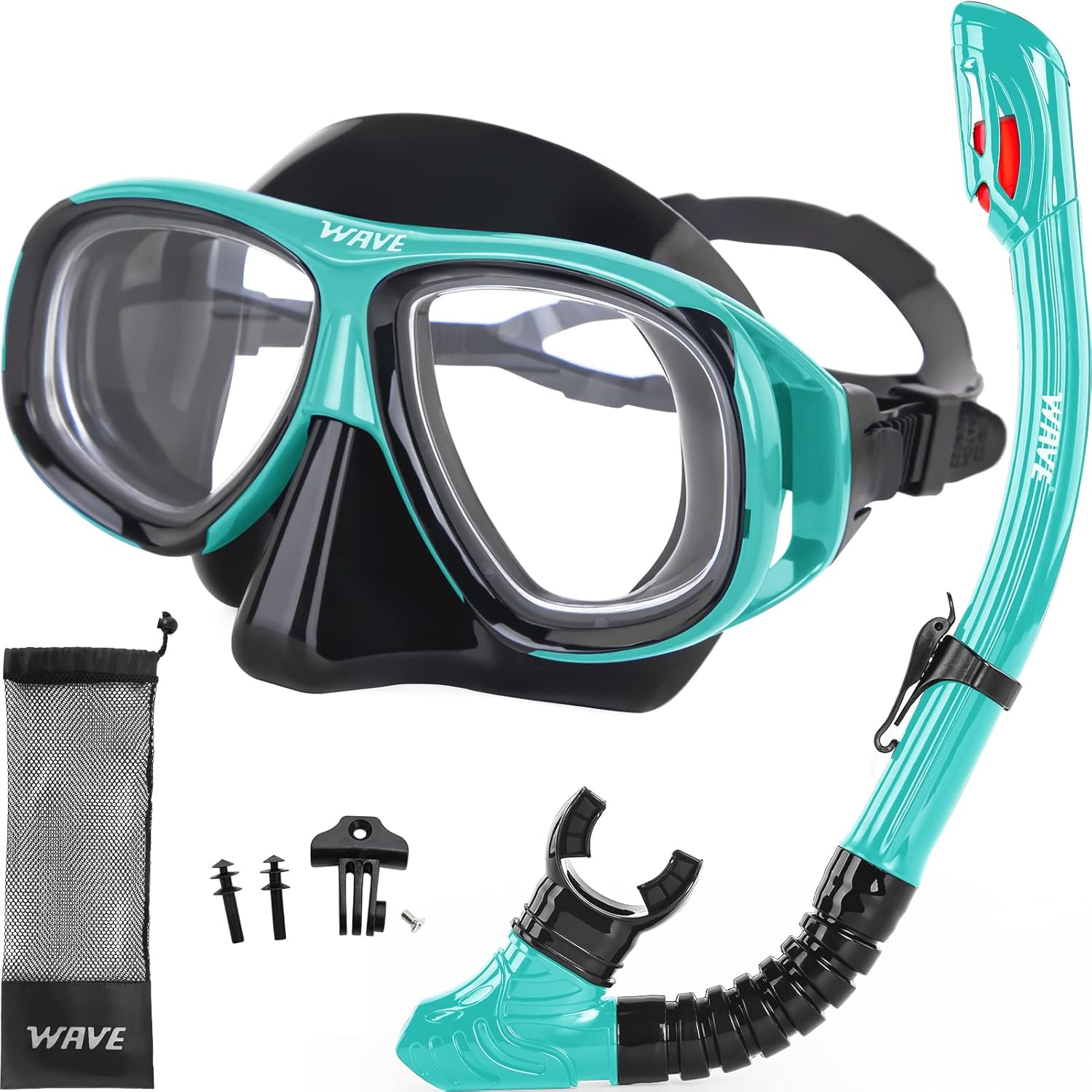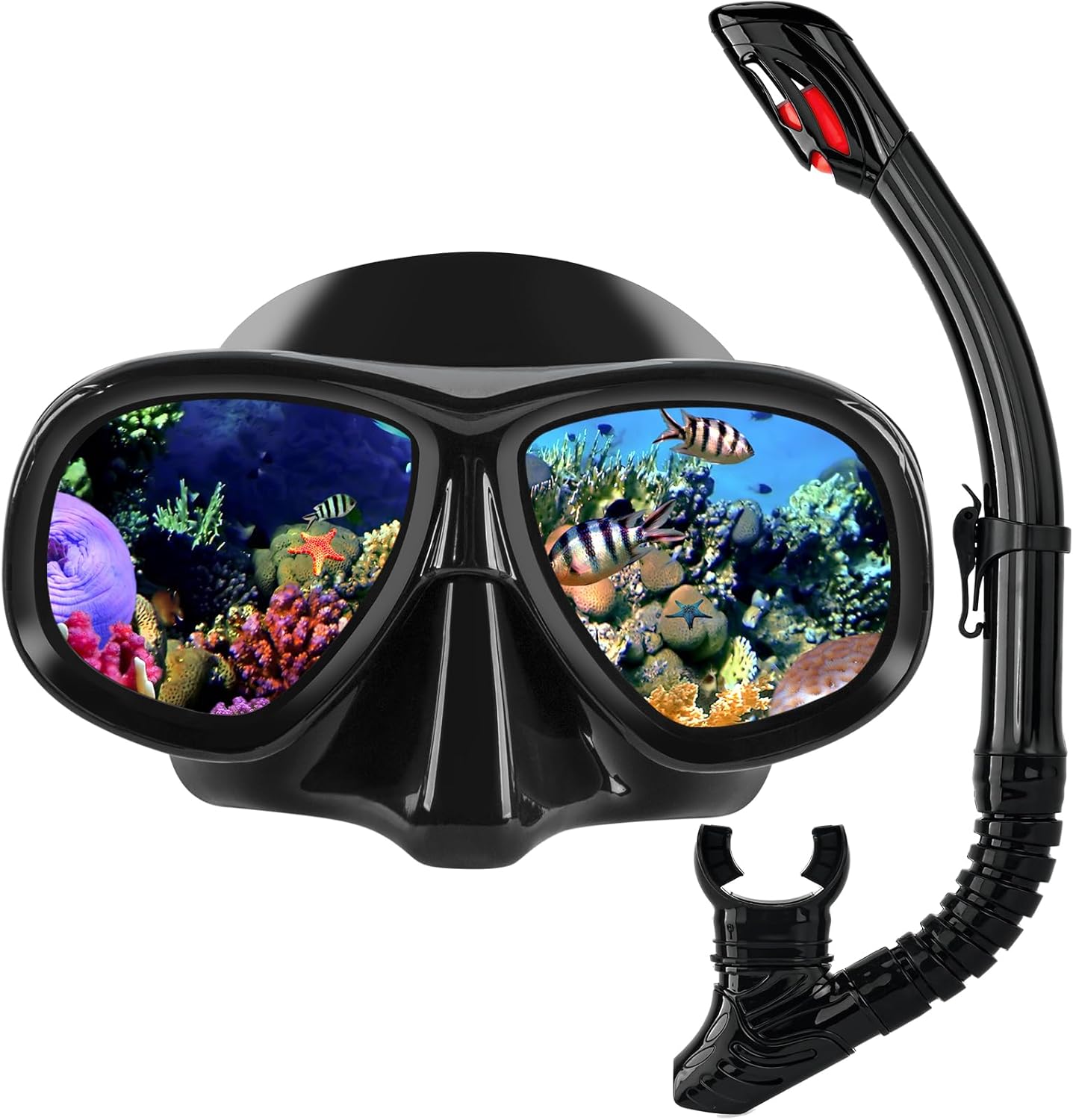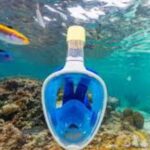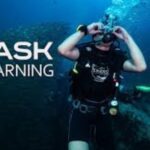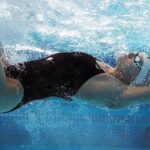Why Low Volume Mask for Freediving – The Bitter Truth
You know you’ve entered the world of freediving when a piece of gear smaller than your lunchbox feels like a life-or-death decision.
The big question every beginner stumbles across is why low volume mask for freediving is so important. And let me start with this: choosing the wrong mask is like showing up to a marathon in flip-flops: you’ll survive a few steps, but you won’t enjoy the journey.
Why Low Volume Mask for Freediving Matters
The reason why low volume mask for freediving is critical comes down to physics and efficiency. A freediver descends on a single breath, and every bit of air counts.
Masks trap air inside. As you go deeper, pressure squeezes that air, and your eyes and face start to feel uncomfortable (this is called mask squeeze).
To stop it, you must exhale through your nose into the mask. With a bulky mask, that means wasting more air that could keep your lungs, blood, and body functioning longer underwater.
A low volume mask requires far less air to equalize, which means you save precious oxygen, avoid painful squeeze, and make deeper dives safer and more comfortable.
That’s the whole heart of it: less wasted air, less effort, more comfort, and better dives. Now let’s dive into the details.
What “Low Volume” Actually Means
Mask volume refers to the amount of air trapped inside between the lens and your face. A low volume mask has lenses close to your eyes, soft silicone skirts, and a compact frame, all designed to keep that internal pocket of air as small as possible.
Think of it like carrying luggage. A giant suitcase (high-volume mask) means more weight and more effort. A carry-on bag (low-volume mask) is easier to manage. For freediving, that lighter “carry-on” saves your breath and keeps you moving without the extra baggage of wasted air.
|
|
|
|
The Physics Behind Equalization
When you descend underwater, pressure doubles roughly every 10 meters. At just 10 meters, the air in your mask compresses to half its size. Without equalizing, this vacuum effect literally sucks the mask onto your face causing discomfort or even burst capillaries around your eyes.
That’s where equalization comes in: you gently blow a puff of air through your nose into the mask to restore pressure balance. With a large mask, you’ll need to spend more of your limited oxygen on this task.
With a low volume mask, only a small puff is needed, meaning you conserve oxygen for your brain and muscles where it truly matters.
Comparing Freediving Masks and Snorkeling Masks
Here’s where confusion often arises. A snorkeling mask usually has a larger frame and lens, designed for wide field-of-view comfort at the surface. Great for watching fish while floating, but terrible when you drop deeper than a swimming pool.
A freediving mask is the opposite. It keeps volume minimal, often sacrificing some panoramic view, because efficiency beats scenery once you’re 20 meters down. If your goal is to explore the coral reef leisurely with a snorkel, your snorkeling mask is fine. If your goal is depth and performance, your freediving mask is essential.
Does a Low Volume Mask Really Make a Difference?
Skeptics sometimes argue the difference is minor, but freedivers know the truth: when you’re working with one breath, every teaspoon of air matters.
A typical low volume mask might need half the air to equalize compared to a traditional design. Over multiple equalizations during descent, this difference accumulates, saving enough air to stretch your dive time or depth significantly.
Experienced freedivers consistently report that they feel less “out of breath” at depth with a low volume mask. It doesn’t sound glamorous, but it’s a game-changer.
|
|
|
Common Concerns and Downsides
Nothing is perfect, and low volume masks come with trade-offs:
- Field of View: The smaller frame means you may not see as widely as with a larger snorkeling mask. Some freedivers notice “tunnel vision.”
- Comfort at Surface: On long surface swims, a compact mask can feel snug or restrictive.
- Prescription Lens Options: Fewer models accept corrective lenses. If you need vision support, choices are limited.
- Fragility: Compact designs sometimes mean thinner glass or silicone, which can wear out sooner.
The good news: these issues are manageable if you choose carefully and maintain your gear properly.
How to Equalize and Clear a Low Volume Mask
Even the best freediving masks will fog, leak, or need clearing sometimes. The technique is straightforward:
- Equalizing: Gently exhale a puff of air through your nose as you descend. Don’t force it.
- Clearing Water: Tilt your head slightly back, press the top of the mask, and exhale through your nose until the water drains out the bottom.
- Anti-Fog Prep: Treat the inside lenses with anti-fog solution, toothpaste, or saliva before dives.
With practice, these become second nature. Freedivers who master equalization quickly notice how little effort it takes with a low volume mask.
How to Choose the Right Low Volume Mask
When shopping, don’t just grab the sleekest option. Pay attention to:
- Fit: Press the mask to your face without the strap. Inhale lightly through your nose. If it sticks, the fit is good.
- Skirt Material: High-quality silicone creates a better seal and lasts longer.
- Lens Position: Lenses close to the eyes reduce internal volume and improve downward visibility.
- Compression Behavior: Some masks compress smoothly; others distort uncomfortably at depth.
Always test in a pool or shallow water before relying on it for serious dives.
Can I Use a Low Volume Mask for Scuba or Snorkeling?
Yes, but with context. For scuba diving, low volume masks are fine, though most scuba divers prefer larger masks with wider vision since air is plentiful from a tank. For casual snorkeling, a low volume mask works, but many snorkelers prefer comfort and visibility over efficiency.
If your activities span snorkeling, scuba, and freediving, you might consider owning two masks: one freediving mask for depth, one snorkeling mask for surface fun.
Face Shape and Prescription Needs
One problem is whether a low volume mask will fit comfortably. Different faces mean different fits: narrow, wide, or high cheekbones all affect the seal. The only sure way to know is to try several models.
For those needing vision correction, some low volume models now accept stick-in prescription lenses, but options remain limited compared to regular masks. Contact lenses remain a practical alternative many freedivers use safely.
Differences by Discipline
- Spearfishing: Low volume masks shine here. Less air use means longer bottom time and sharper focus on targets. Pair with a reliable dive knife and you’re equipped for practical underwater hunting.
- Pool Training: Comfort matters more than volume since depth isn’t a factor. A slightly larger mask can work here.
- Depth Records: Every micro-puff of air counts. Elite freedivers universally rely on ultra-low volume masks.
Mask Compression and Durability
Even low volume masks compress as you descend. What matters is how predictably they compress. Quality freediving masks are designed with flexible skirts and sturdy lenses that hold their shape, keeping vision clear.
Cheap knockoffs can collapse awkwardly or leak under pressure. Always test compression before buying.
Care and Maintenance
A low volume mask, lasts longer with proper care:
- Rinse with fresh water after every dive.
- Store out of sunlight to prevent silicone breakdown.
- Avoid abrasive cleaners; use mild soap.
- Check straps and buckles regularly for wear.
With attention, a freediving mask can last many seasons.
FAQs on Why Low Volume Mask For Freediving
Can I Get Mask Squeeze Even With A Low Volume Mask?
Yes, if you forget to equalize. The risk is lower but not eliminated.
Do Water Shoes Help With Freediving?
They’re great for rocky entries, but not essential once in the water.
Is A Snorkel Necessary For Freediving?
Useful at the surface, but most divers drop it before deep dives to reduce drag.
How Deep Can I Go With A Low Volume Mask?
As deep as your training allows: masks won’t limit depth, but your lungs and equalization skills will.
Can A Scuba Diver Benefit From A Low Volume Mask?
Absolutely, especially in wrecks or caves where compact design reduces snagging risks.
Buying Checklist
Before you buy, ask:
- Does it fit without straps?
- Is the skirt soft silicone?
- Are lenses close to the eyes?
- Does it compress smoothly?
- Does the brand have a track record in freediving masks, not just snorkeling masks?
The Bottom Line On Why Low Volume Mask For Freediving
So, to circle back, why low volume mask for freediving? Because it saves air, prevents discomfort, improves efficiency, and lets you focus on the beauty around you instead of wasting oxygen equalizing your gear. It’s not a gimmick; it’s a proven necessity backed by physics and the real-world experience of freedivers everywhere.
